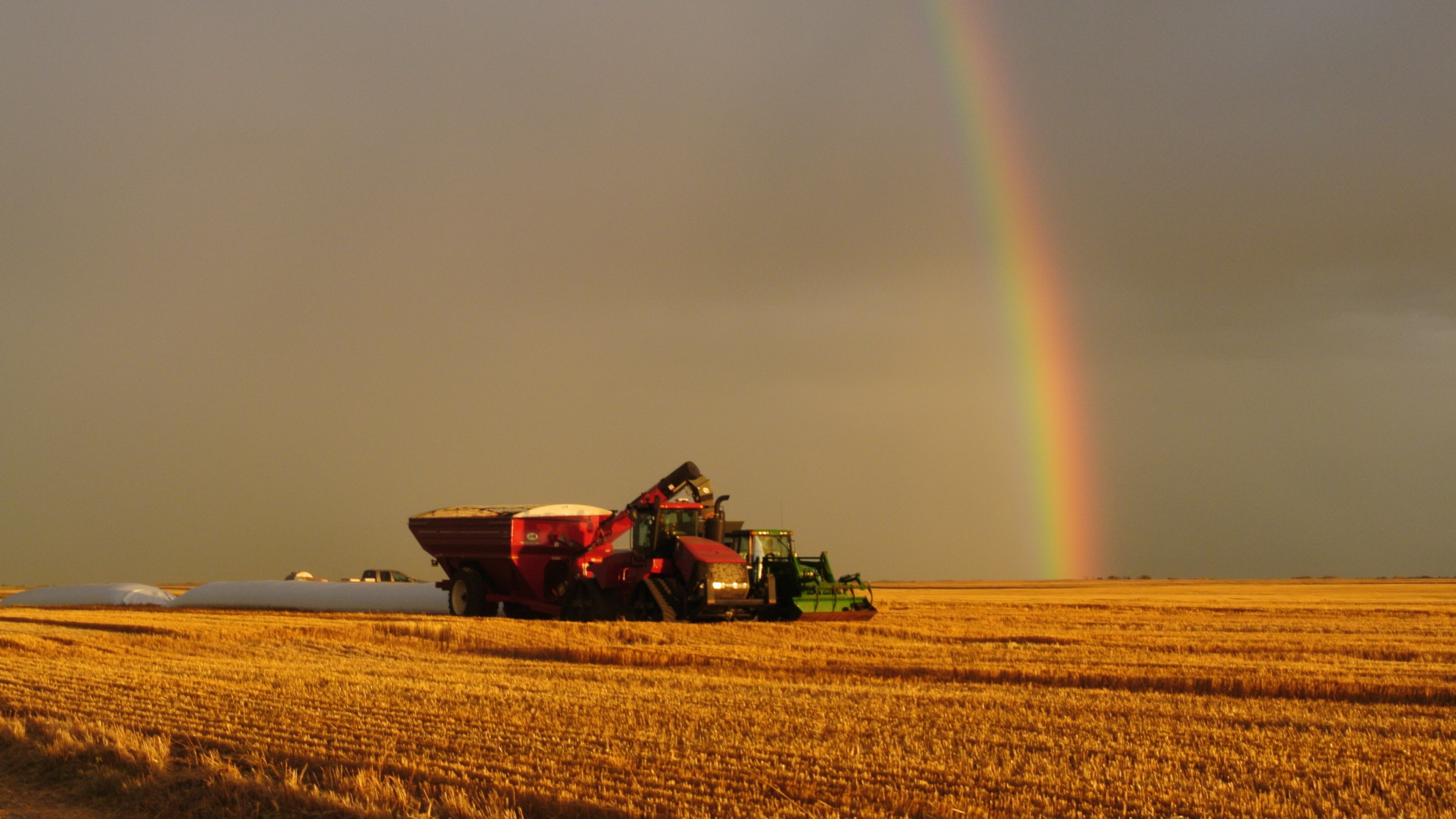John Deere's See & Spray technology was used across more than five million acres of farmland during...
Harvest is Winding Down - Farmers are Looking Ahead – NOW is the Time to Reach Out….

As the 2024 harvest season winds down, farmers are balancing micronutrients, managing weather challenges, and preparing for the 2025 season.
Johnny Verell - Jackson, Tennessee
Johnny Verell is a third-generation farmer in western Tennessee. He farms corn, soybeans and wheat.
This week on the farm, we’re in the middle of harvesting double-crop soybeans—the ones we planted after the wheat crop. It’s going really well. We should have about one more week before we get all of them out. Yields are a bit inconsistent. In the same area, we’re seeing yields that range from 10 to 15 bushels below average to some above average.
The variation is largely due to how much rain the area received and the timing of planting. Overall, we’re very happy with the soybean crop, especially considering the summer heat and dry conditions we had late in the season. So, everything is going well there.
We also wrapped up wheat planting this week. We had several machines running to get that done, and we were able to plant all the wheat in about seven days, thanks to the dry weather, which is unusual for this time of year. The only issue with the wheat is that we planted it in dry soil, so a lot of it won’t sprout until we get some rain. But that’s fine with us—it’s much better to plant in dust than in mud. So, the wheat is in the ground, and everything is looking good.
In about one more week, we’ll have all the soybeans harvested, and we’ll start preparing to harvest some double-crop corn in about 10 days. We’ll probably start hauling out some grain as well. We’ve had a few calls from places looking for corn earlier than usual, which is great. Typically, we don’t get requests until after the first of the year, so we’re going to start running a few trucks and keep moving forward with the harvest.
Temple Rhodes - Centreville, Maryland
Temple Rhodes is a fifth-generation farmer in Centreville, Maryland. Chestnut Manor Farms operates 3,000 acres of soybeans, 1,500 acres of corn, and 1,500 acres of wheat. His family also runs a hunting operation.
Corn harvest is nearly wrapped up for some early farmers. Yields are surprisingly mixed, with both good and bad results on the same farms. Overall, yields are significantly below the average APH (actual production history). Many samples are of poor quality, with issues like ear mold, sprouting, and aflatoxins.
The early soybean crop turned out fairly decent, considering the heat it endured. However, we had a three-week window when the beans were ready for harvest, but we couldn’t get in the fields due to foggy days and misty rain. This caused significant damage to the majority of the early crop. A lot of our soybeans are typically exported, but now those beans will be used for feed because they are being rejected for export. The double-crop beans will need to carry the load for us this year in terms of exports.
It’s extremely dry here, and many farmers have stopped planting wheat because of the drought. Some wheat that was planted early is now turning yellow due to the lack of moisture. There seems to be some hope in the markets, as we weren’t planning to plant much wheat this year, and it’s reflecting in the basis. However, I would still say there won’t be much wheat planted in this area this fall.
Kelly Garrett - Arion, Iowa
Kelly Garrett is a fifth-generation farmer in western Iowa. Garrett farms 4,000 acres of corn, over 1,800 acres of soybeans, and 170 acres of winter wheat.
At the beginning of the season, I was a bit nervous seeing how the crop looked different early on, but I was committed. I waited until the end, and as we reduced the nitrogen and increased our use of the airplane for various applications, especially during certain stages, we started seeing significant yield gains. I couldn’t be happier with the yield results. The micronutrients we’re applying with the airplane and the soluble calcium trials are continuing to pay off, and we’re pushing further in that direction.
As we near the end of harvest and begin taking out our plots, we’re noticing significant yield improvements when we pay attention to calcium. Should calcium be considered a macronutrient? I believe it should be. Often, we think of calcium or lime as a soil amendment, but we need to start considering it from a fertility standpoint.
Paying attention to factors like the calcium-to-magnesium ratio and making soluble calcium available to the plants will be a priority for us in the 2025 growing season, especially after seeing the results in our trials this year.
EDITOR’S TAKE:
We share this article as a way of reminding you that farmers/ranchers will be looking ahead as harvest winds down. Besides planning for 2025, they will be looking over those harvest yield results, calculating their income, doing some tax planning and figuring out their marketing strategies. That means they will begin looking for ways to improve their productivity and efficiency going forward. Many of them (and this is supported by actual research) will be looking for that new or qualified used truck. Now is an especially good time to remind them of the IRS section 179 depreciation that can offer significant tax advantages. It is also a great time to remind them about AgPack®, which offers up to $40,000 in exclusive rebates and discounts on products they use everyday on the farm or ranch. CADFI might also be appealing since it can match payments to income streams. So don’t wait, put your inventory on AgTruckTrader.com. It specifically targets farmers/ranchers in your area and delivers a much better lead than other services that merely canvas the world.








